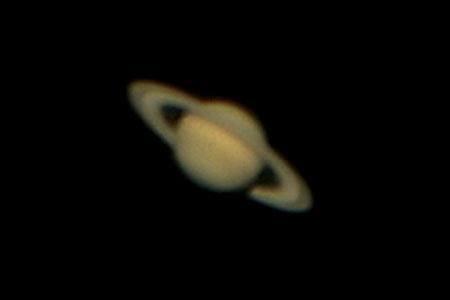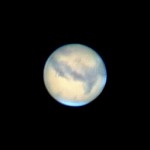Last week I shot a little video of Mars and Saturn in an attempt to get some nice imagery of these planets. Mars is approaching opposition and Saturn is well placed in the sky for observation. It appeared at first as if the seeing was pretty good, but reviewing the video shows that there were issues.
The results? No so good actually. The Mars shot shows no detail beyond the polar cap, the Saturn shot is marginally better, but still nothing I am happy with. The imagery was taken with the Canon 60D in crop movie mode, and the C11 telescope operating at f/10. I spent some time tweaking the collimation, that looked looked fairly good. The video? The resulting material is not so good, I suspect the main cause of the poor results was seeing, some variant of high frequency distortion blurring the fine details.
There may also be some issues with the new version of Registax. Version 6 has some major differences in how it operates, not sure if I am doing everything right. The program may have some bugs as well, I crashed it several times while attempting to process the imagery.



